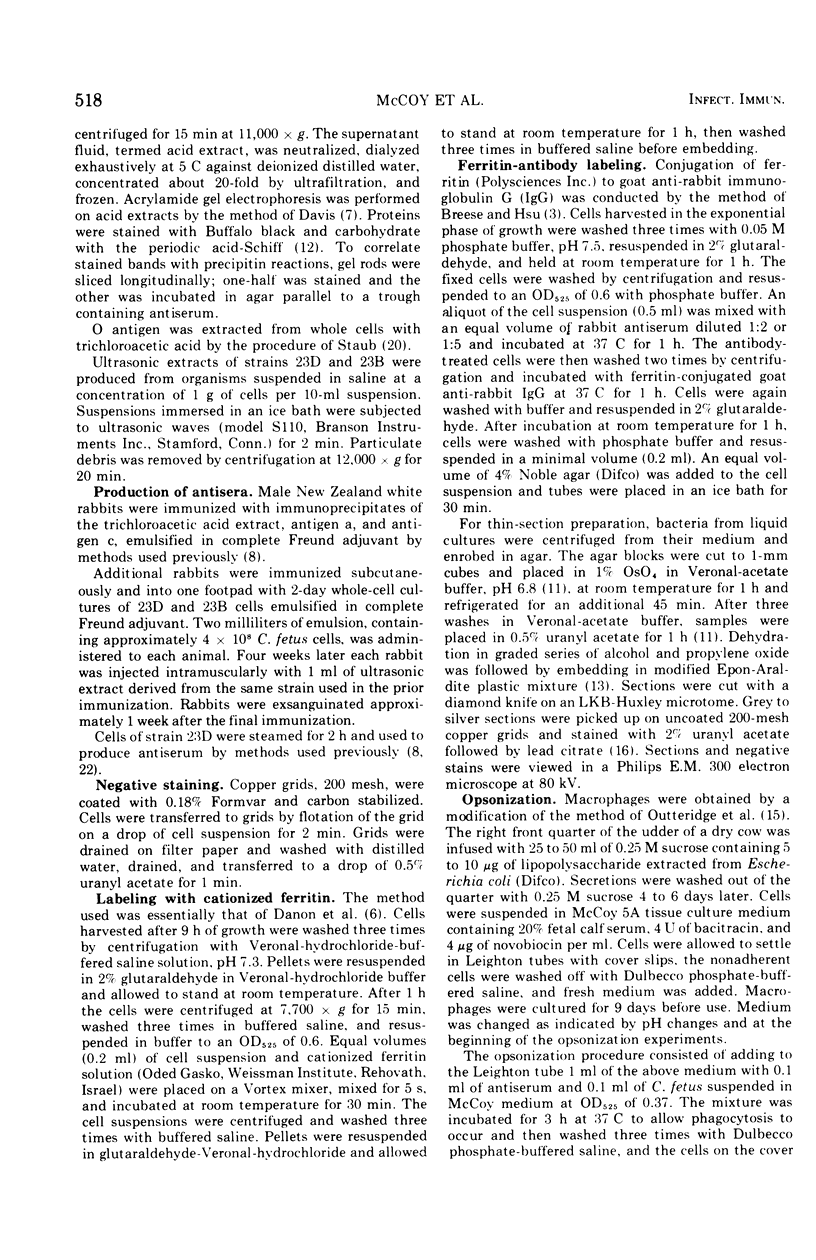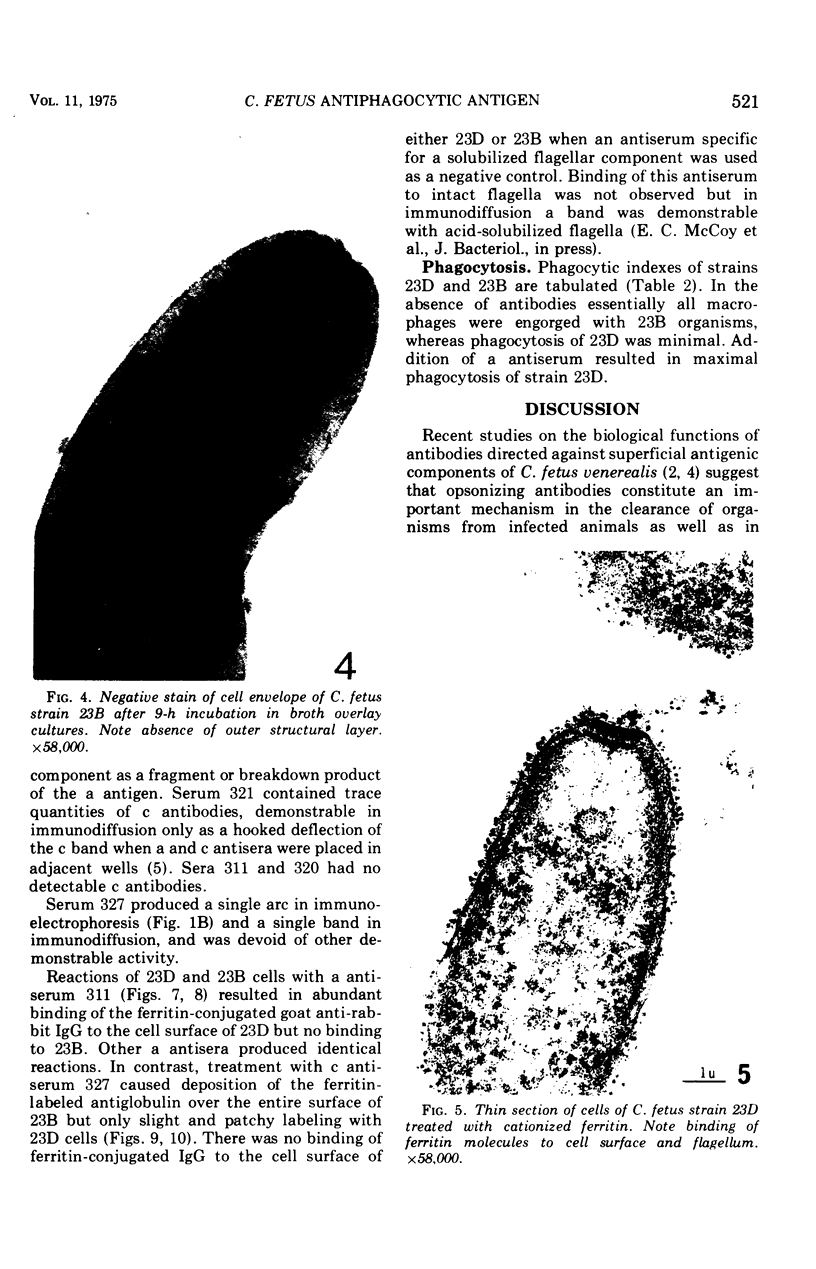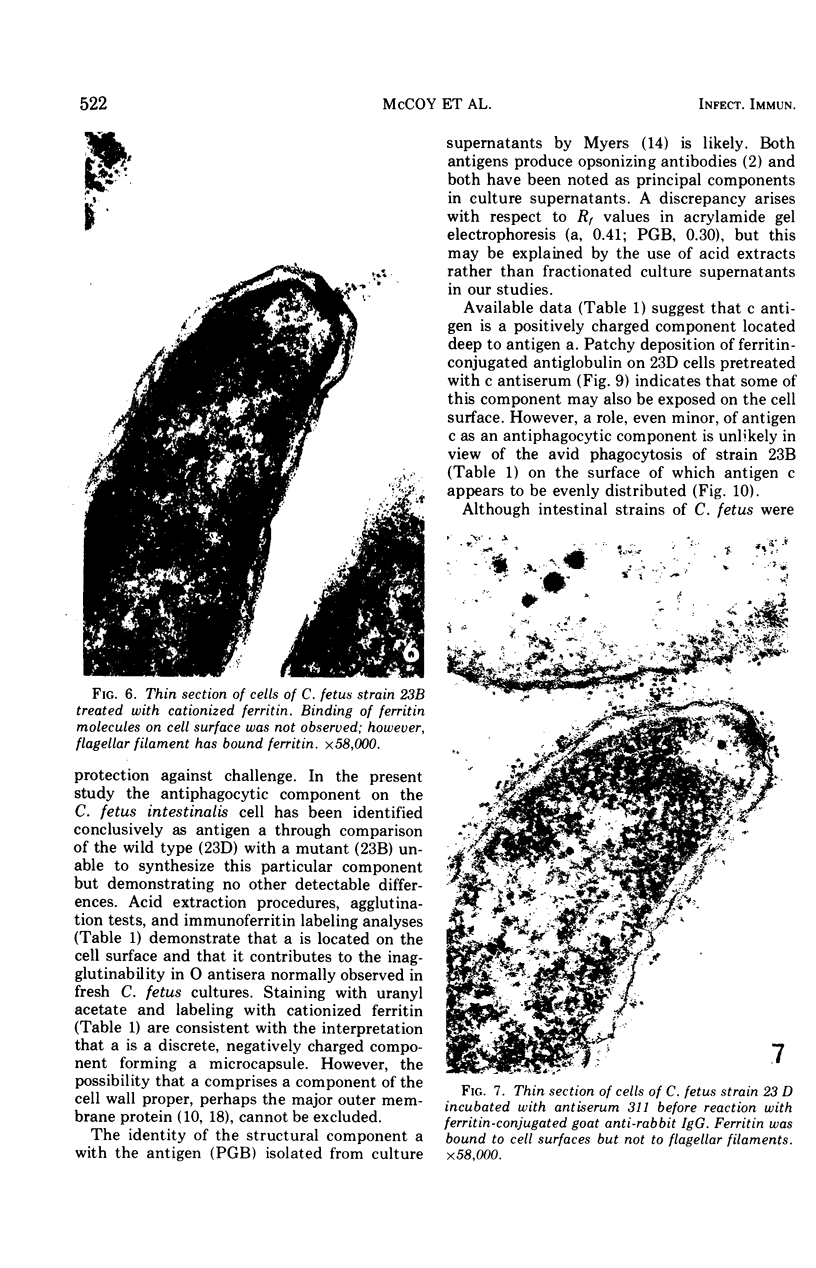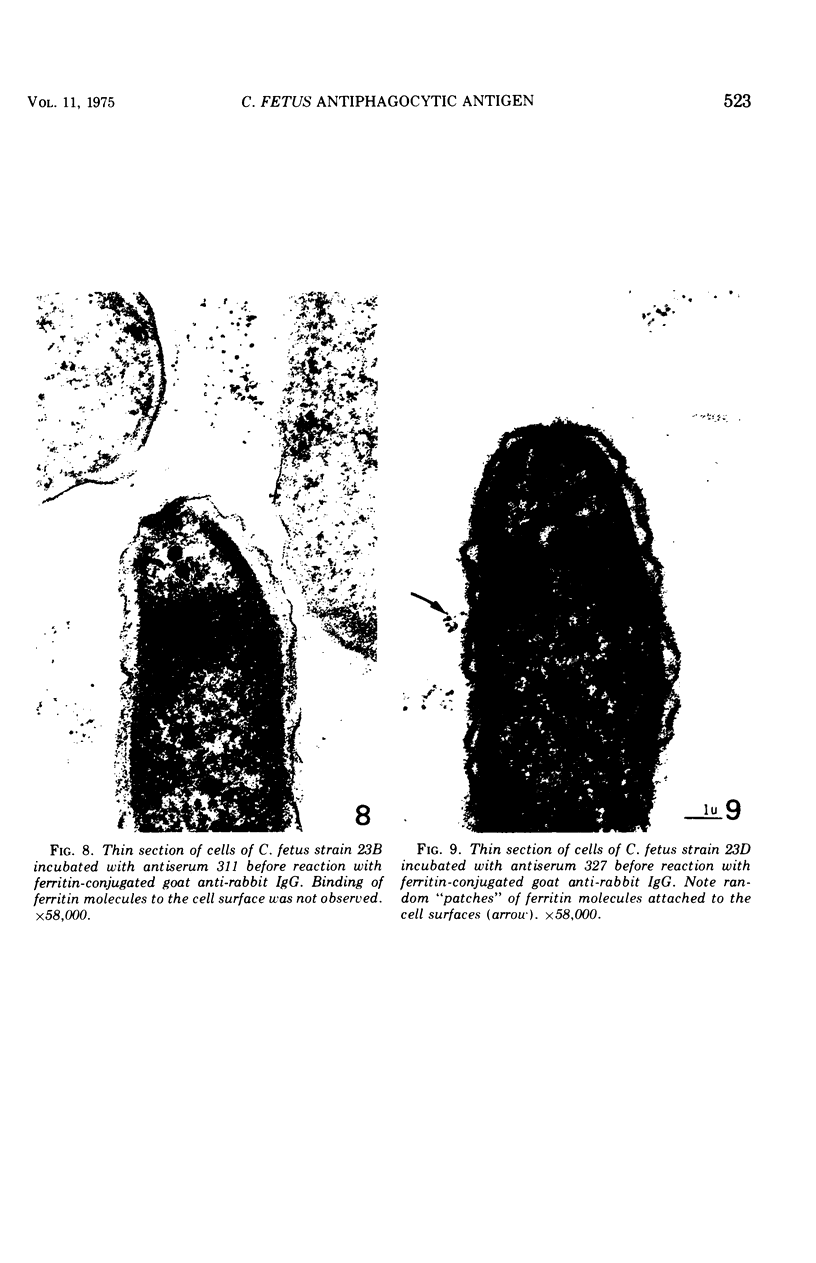Abstract
A glycoprotein responsible for the antiphagocytic properties of Campylobacter fetus has been identified by comparing cells of a wild-type strain with those of a mutant lacking this substance. The antiphagocytic component is demonstrable through electron microscopy as a discrete, negatively charged structure on the periphery of the cell. CLT is readily removed from the cell by mild extraction procedures and contributes to the inagglutinability in O antiserum normally displayed by C. fetus. Cells possessing this antigen are refractory to ingestion by macrophages except in the presence of specific antiserum. In its absence maximum phagocytosis occurs without a requirement for opsonins. It is concluded that the antiphagocytic component comprises a critical virulence factor of the bacterium.
Full text
PDF








Images in this article
Selected References
These references are in PubMed. This may not be the complete list of references from this article.
- BOND J. M. Characteristics of colonial forms of Vibrio fetus. Am J Vet Res. 1957 Apr;18(67):449–455. [PubMed] [Google Scholar]
- Border M., Myers L. L., Firchammer B. D. Bactericidal activity of blood of rabbits vaccinated with homologous antigens of Campylobacter fetus (Vibrio fetus). Infect Immun. 1974 Sep;10(3):416–421. doi: 10.1128/iai.10.3.416-421.1974. [DOI] [PMC free article] [PubMed] [Google Scholar]
- Corbeil L. B., Schurig G. D., Duncan J. R., Corbeil R. R., Winter A. J. Immunoglobulin classes and biological functions of Campylobacter (Vibrio) fetus antibodies in serum and cervicovaginal mucus. Infect Immun. 1974 Sep;10(3):422–429. doi: 10.1128/iai.10.3.422-429.1974. [DOI] [PMC free article] [PubMed] [Google Scholar]
- DAVIS B. J. DISC ELECTROPHORESIS. II. METHOD AND APPLICATION TO HUMAN SERUM PROTEINS. Ann N Y Acad Sci. 1964 Dec 28;121:404–427. doi: 10.1111/j.1749-6632.1964.tb14213.x. [DOI] [PubMed] [Google Scholar]
- Danon D., Goldstein L., Marikovsky Y., Skutelsky E. Use of cationized ferritin as a label of negative charges on cell surfaces. J Ultrastruct Res. 1972 Mar;38(5):500–510. doi: 10.1016/0022-5320(72)90087-1. [DOI] [PubMed] [Google Scholar]
- Duncan J. R., Wilkie B. N., Hiestand F., Winter A. J. The serum and secretory immunoglobulins of cattle: characterization and quantitation. J Immunol. 1972 Apr;108(4):965–976. [PubMed] [Google Scholar]
- Frasch C. E., Gotschlich E. C. An outer membrane protein of Neisseria meningitidis group B responsible for serotype specificity. J Exp Med. 1974 Jul 1;140(1):87–104. doi: 10.1084/jem.140.1.87. [DOI] [PMC free article] [PubMed] [Google Scholar]
- KELLENBERGER E., RYTER A., SECHAUD J. Electron microscope study of DNA-containing plasms. II. Vegetative and mature phage DNA as compared with normal bacterial nucleoids in different physiological states. J Biophys Biochem Cytol. 1958 Nov 25;4(6):671–678. doi: 10.1083/jcb.4.6.671. [DOI] [PMC free article] [PubMed] [Google Scholar]
- MOLLENHAUER H. H. PLASTIC EMBEDDING MIXTURES FOR USE IN ELECTRON MICROSCOPY. Stain Technol. 1964 Mar;39:111–114. [PubMed] [Google Scholar]
- Myers L. L. Purification and Partial Characterization of a Vibrio fetus Immunogen. Infect Immun. 1971 Apr;3(4):562–566. doi: 10.1128/iai.3.4.562-566.1971. [DOI] [PMC free article] [PubMed] [Google Scholar]
- Outteridge P. M., Osebold J. W., Zee Y. C. The mammary gland of the ewe as a source of neutrophils and macrophages for repeated collections. J Reticuloendothel Soc. 1971 Nov;10(5):440–448. [PubMed] [Google Scholar]
- REYNOLDS E. S. The use of lead citrate at high pH as an electron-opaque stain in electron microscopy. J Cell Biol. 1963 Apr;17:208–212. doi: 10.1083/jcb.17.1.208. [DOI] [PMC free article] [PubMed] [Google Scholar]
- RISTIC M., WHITE F. H., DOTY R. B., HERZBERG M., SANDERS D. A. The characteristics of agglutinating antigens of Vibrio fetus variants. I. Effects of heat and formalin on serological activity. Am J Vet Res. 1957 Oct;18(69):764–770. [PubMed] [Google Scholar]
- Schnaitman C. A. Protein composition of the cell wall and cytoplasmic membrane of Escherichia coli. J Bacteriol. 1970 Nov;104(2):890–901. doi: 10.1128/jb.104.2.890-901.1970. [DOI] [PMC free article] [PubMed] [Google Scholar]
- Schurig G. D., Hall C. E., Burda K., Corbeil L. B., Duncan J. R., Winter A. J. Persistent genital tract infection with Vibrio fetus intestinalis associated with serotypic alteration of the infecting strain. Am J Vet Res. 1973 Nov;34(11):1399–1403. [PubMed] [Google Scholar]
- Van Oss C. J., Gillman C. F. Phagocytosis as a surface phenomenon. Contact angles and phagocytosis of non-opsonized bacteria. J Reticuloendothel Soc. 1972 Sep;12(3):283–292. [PubMed] [Google Scholar]
- WINTER A. J., BURDA K., DUNN H. O. AN EVALUATION OF CULTURAL TECHNICS FOR THE DETECTION OF VIBRIO FETUS IN BOVINE SEMEN. Cornell Vet. 1965 Jul;55:431–444. [PubMed] [Google Scholar]
- Winter A. J. An antigenic analysis of Vibrio fetus. 3. Chemical, biologic, and antigenic properties of the endotoxin. Am J Vet Res. 1966 May;27(118):653–658. [PubMed] [Google Scholar]












